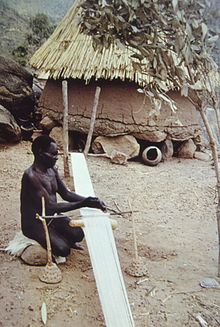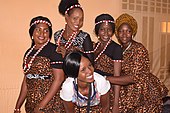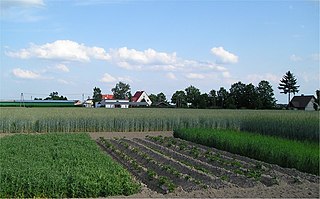
Crop rotation is the practice of growing a series of different types of crops in the same area across a sequence of growing seasons. This practice reduces the reliance of crops on one set of nutrients, pest and weed pressure, along with the probability of developing resistant pests and weeds.

Adamawa State is a state in the North-East geopolitical zone of Nigeria, bordered by Borno to the northwest, Gombe to the west for 95 km, and Taraba to the southwest for about 366 km, while its eastern border forms part of the national border with Cameroon across the Atlantica Mountains for about 712 km. It takes its name from the historic emirate of Adamawa, with the emirate's old capital of Yola, serving as the capital city of Adamawa state. The state is one of the most heterogeneous in Nigeria, with over 100 indigenous ethnic groups. It was formed in 1991, when the former Gongola state was divided into Adamawa and Taraba states. Since it was carved out of the old Gongola State in 1991 by the General Ibrahim Badamsi Babangida military regime, Adamawa State has had 10 men, both military and civilian, controlling the levers of power, who played crucial roles in transforming the state into what it is today.
Articles related to Cameroon include:

The North Region makes up 66,090 km2 of the northern half of The Republic of Cameroon. Neighbouring territories include the Far North Region to the north, the Adamawa Region to the south, Nigeria to the west, Chad to the east, and Central African Republic to the southeast. The city of Garoua is both the political and industrial capital. Garoua is Cameroon's third largest port, despite the fact that the Bénoué River upon which it relies is only navigable for short periods of the year.

Borno State is a state in the North-East geopolitical zone of Nigeria, bordered by Yobe to the west for about 421 km, Gombe to the southwest for 93 km, and Adamawa to the south while its eastern border forms part of the national border with Cameroon for about 426 km, its northern border forms part of the national border with Niger, for about 223 km mostly across the Komadougou-Yobe River, and its northeastern border forms all of the national border with Chad for 85 km, being the only Nigerian state to border three foreign countries. It takes its name from the historic emirate of Borno, with the emirate's old capital of Maiduguri serving as the capital city of Borno State. The state was formed in 1976 when the former North-Eastern State was broken up. It originally included the area that is now Yobe State, which became a distinct state in 1991.

The Kirdi are the many cultures and ethnic groups who inhabit northwestern Cameroon and northeastern Nigeria.

The Mandara Mountains are a volcanic range extending about 190 km along the northern part of the Cameroon–Nigeria border, from the Benue River in the south to the north-west of Maroua in the north. The highest elevation is the summit of Mount Oupay, at 1,494 m (4,900 ft) above sea level.

Kapsiki (Ka-Tsepkye) is a people living on both sides of the border between North Cameroon and Northeast Nigeria. They are called Kapsiki in Cameroon, and Kamwe (Higi) in Nigeria. Together they amount to about 120,000 people. Their language, Psekiye or Kamwe, consists of eleven dialects including Nkafa, Sina, Ghye, Humsi, Dakwa and Tilli and belongs to the Chadic language family.

Mokolo is the departmental capital and largest city of the Mayo-Tsanaga department, in the Far North Province of Cameroon. It is the fourth largest city in the Far North Province, after Maroua, Yagoua, and Kousséri. It is located in the Mandara Mountains that run along the Cameroonian-Nigerian border.
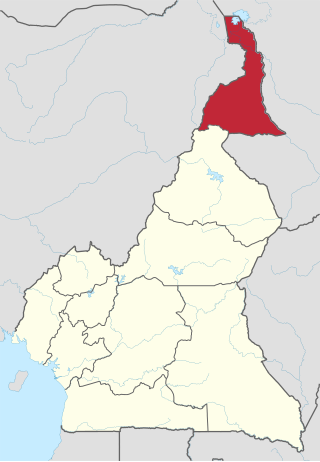
The Far North Region, also known as the Extreme North Region, is the northernmost and most populous constituent province of the Republic of Cameroon. It borders the North Region to the south, Chad to the east, and Nigeria to the west. The capital is Maroua.
Baldemu, or Mbazlam, is a nearly extinct Afro-Asiatic language spoken in northern Cameroon. Baldamu is spoken in Bogo commune, Diamaré department, Far North Region by only 5 speakers as of 2012. Speakers have been shifting to Fulfulde.
Mafa is an Afro-Asiatic language spoken in northern Cameroon and Northern Nigeria by the Mafa people.
The Diy-Gid-Biy (DGB) sites are archaeological sites located around the Mandara Mountains of northern Cameroon and Nigeria, overlooking the several kilometers long Shikewe watershed. These sites get their name Diy-Gid-Biy from the Mafa language, which can be translated as "place of chiefly residence." There are 16 of these DGB sites which date back to around the 15th century AD. While knowledge of these sites has existed for some time, only in 2001 archaeologists began to investigate the sites and their cultural heritage in relation to the region.
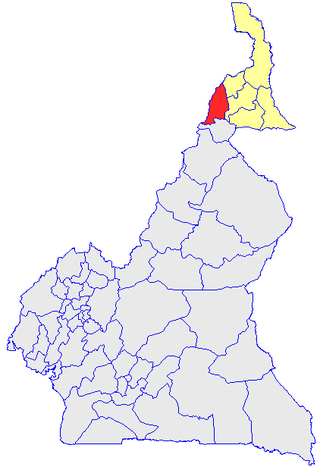
Mayo-Tsanaga is a department of Extreme-Nord Province in Cameroon. The department covers an area of 4,393 km2 and at the 2005 Census had a total population of 699,971. The capital of the department is at Mokolo. It is located within the Mandara Mountains, on the border with Nigeria.

Agricultural sustainability in Northern Nigeria requires flexibility in both ecological management as well as economic activity. The population densities of the rural area in this region climbed from 243 to 348 people per square kilometer between 1962 and 1991, but the land area under permanent cultivation remained approximately the same. Increasing population results in high food demand among urban and rural dwellers, areas of cultivation, and reduced soil fertility. However, there are instances where frequent agricultural practices is not associated with degradation such as in Kano and neighboring region. Even though poverty and insufficient food exists in the region, it does not affect crop yield owing to sustained efforts to produce food in response to its high demand.
The Yaéré, from Fula yaayre, is the name of a vast annually-flooded grassland and savanna, part of the extensive floodplains around the shallow and variable Lake Chad in Central Africa. The Yaéré is part of the Lake Chad flooded savanna ecoregion.

The Mandara Plateau mosaic, also known as the Mandara Plateau woodlands, is a tropical grasslands, savannas, and shrublands ecoregion located in the Mandara Mountains of northern Nigeria and Cameroon.

The Mandara people, also known as Wandala or Mandwara, are a Central African traditionalist ethnic group found in north Cameroon northeastern Nigeria, and southeastern Chad. They speak the Wandala language, which belongs to the Chadic branch of Afro-Asiatic languages found in northeastern Africa.
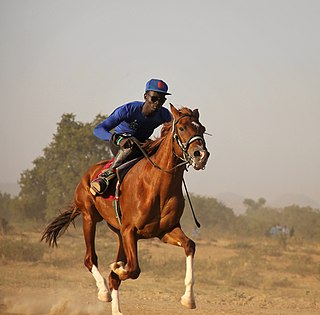
The history of horses in Cameroon is linked above all to the traditional presence of this animal in the northern regions of the country, around Lake Chad from the 16th century, then in Adamawa, as well as in the Garoua and Maroua regions. Traditional equestrian practices in Cameroon, such as horse parades and horse dances, have more recently been joined by equestrian activities, under the influence of Western expatriates and investors, notably in Yaoundé since the 1990s. The main use of horses in Cameroon is in agriculture and transport fields.
